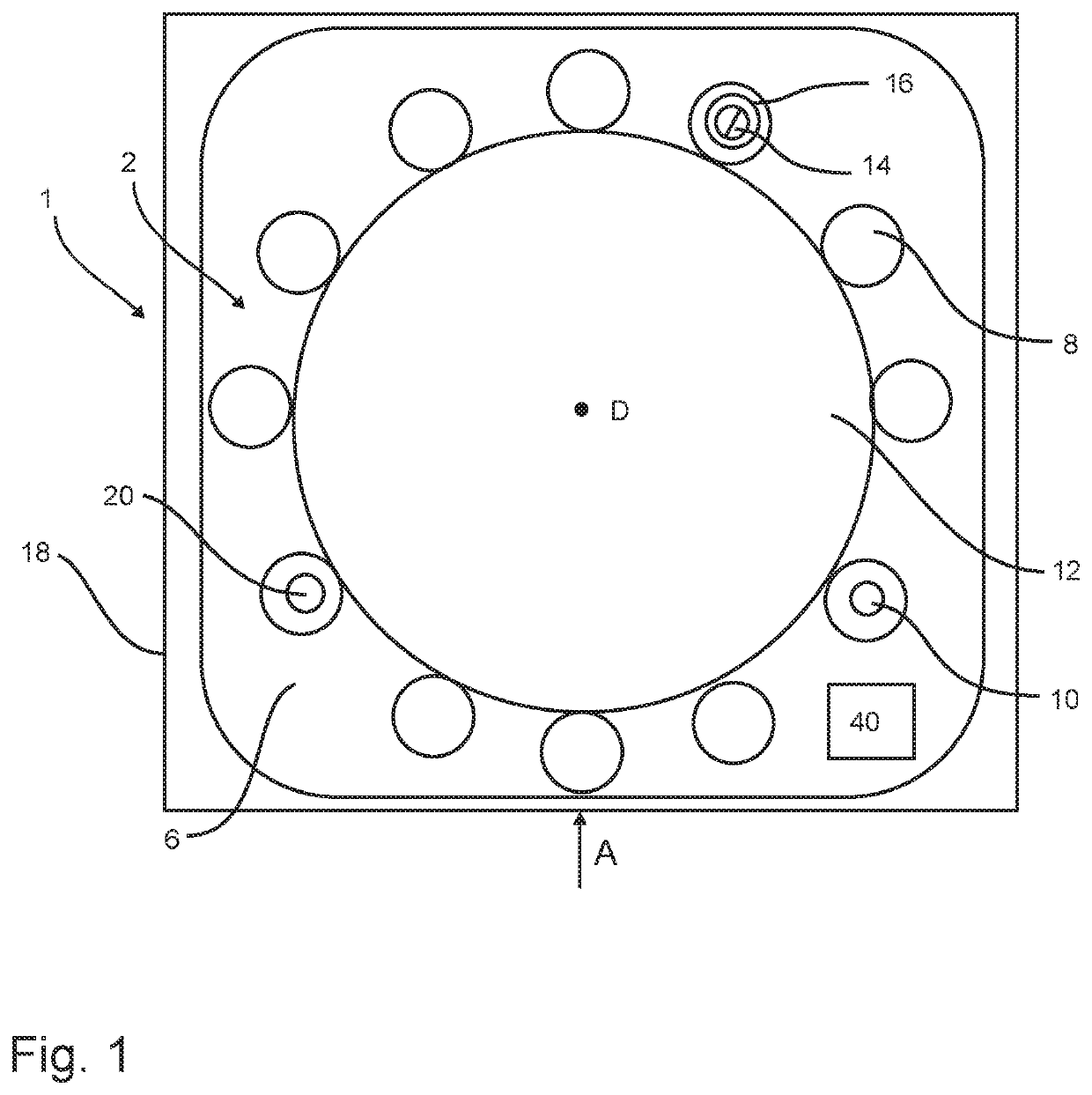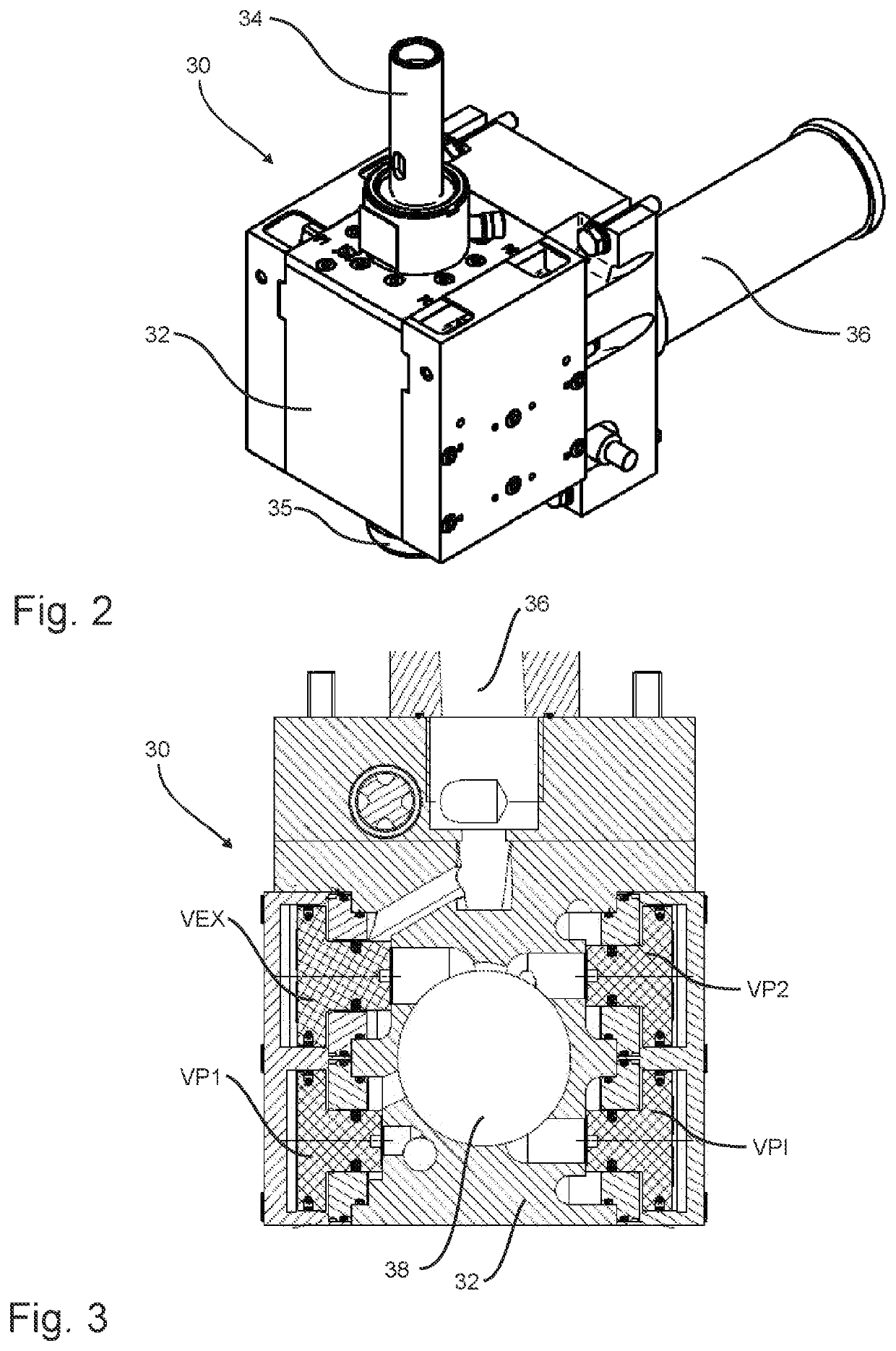Device and method for switching time compensation on the valve block
a valve block and switching time compensation technology, applied in the field of devices and a method for reshaping plastic parisons into plastic, can solve the problems of reducing the consistent quality of bottles, unable to achieve pure electrical actuation, and unable to ensure constant and consistent switching tim
- Summary
- Abstract
- Description
- Claims
- Application Information
AI Technical Summary
Benefits of technology
Problems solved by technology
Method used
Image
Examples
Embodiment Construction
[0044]FIG. 1 shows a schematic representation of a device 1 for reshaping plastic parisons 10 into plastic containers 20. In this case the plastic parisons 10 are fed to the individual reshaping stations or blow moulding stations 8 and are expanded to form plastic containers 20, while they are being transported by a transport device 2. After this expansion the plastic containers 20 are removed from the device 1 again. For this purpose, a feed starwheel can be provided which delivers the plastic parisons to the machine 1 and also a discharge device, in particular likewise a transport starwheel, which discharges the finally expanded containers 20 from the device 1. The device 1 has a station support 12 on which a plurality of blow moulding stations 8 are arranged. In this case this station support may be for example, as shown in FIG. 1, a blow moulding wheel which is rotatable with respect to an axis of rotation D (which here extends perpendicular to the drawing plane and thus vertica...
PUM
| Property | Measurement | Unit |
|---|---|---|
| pressures | aaaaa | aaaaa |
| pressure | aaaaa | aaaaa |
| pressure | aaaaa | aaaaa |
Abstract
Description
Claims
Application Information
 Login to View More
Login to View More - R&D
- Intellectual Property
- Life Sciences
- Materials
- Tech Scout
- Unparalleled Data Quality
- Higher Quality Content
- 60% Fewer Hallucinations
Browse by: Latest US Patents, China's latest patents, Technical Efficacy Thesaurus, Application Domain, Technology Topic, Popular Technical Reports.
© 2025 PatSnap. All rights reserved.Legal|Privacy policy|Modern Slavery Act Transparency Statement|Sitemap|About US| Contact US: help@patsnap.com



